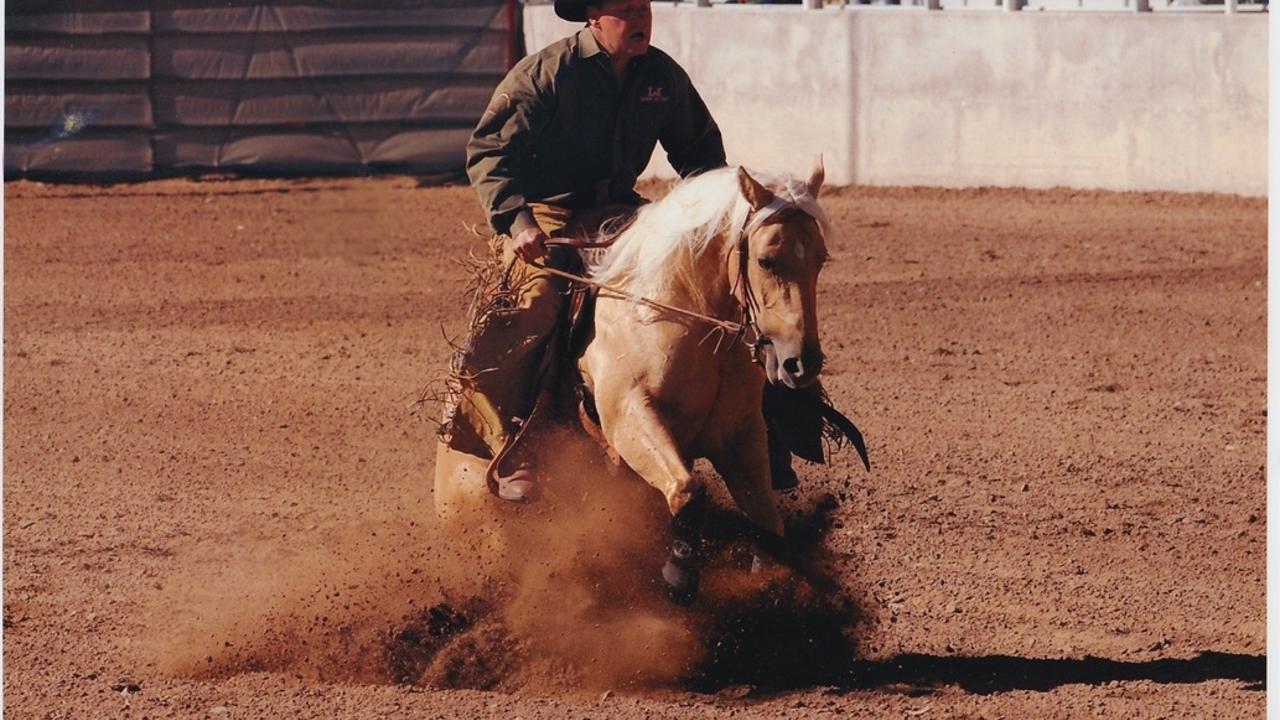How To Stop a Horse? 3 Fundamentals For The BIG STOP

Wondering How to stop a horse? Kade Mills breaks down the three fundamentals to achieve the desired result.
There are three different ways to stop your horse. We can stop from the reins, from the word “whoa,” and lastly from our seat and pushing in our stirrups.
Teaching our horse all three ways will ensure a great stop. I have always been taught the key to teaching a horse to stop is a soft and smooth back up.
How To Stop a Horse: Step One
First I teach him to give his face and give me a few steps back then I will start to engage his body using my legs. It takes time to teach our horses to add speed in the back up but is a great tool to keep them soft.
I always use the order face, body, then speed. They must yield all three to have a complete back up and stop. Once they understand the timed release, we can teach each one individually.If we first start with the face, it allows us to pull on them to engage the body and move their feet. If they are stiff in the face, they will have trouble understanding the pressure we need to add to engage their feet.
Once they understand the pressure we add to engage their feet, they will learn through timed release to follow that feel and bring speed to the back up. Then we can start to apply it through his gates from a walk to the lope. When I ask for the stop, I am drawing my hands back slow and letting the horse decide when to stop.
Backing him up following the stop is how we teach him to sit down. If your horse starts to stop on its front end, we can move the shoulders around in a spin to free them up on the front end.
Try to always start that back up or that spin slow after a stop, and then start to engage his body. If we let them find their stop in the beginning, it will build confidence in the stop that will really help maintain it.
How To Stop a Horse: Step 2
Now we start teaching them to stop from the word. Before we can start, we must be able to ride along the rail on a loose rein and guide around.
Once we have them on a loose rein on the rail and not leaning, we can start introducing them to the word. Without changing our body, we calmly say the word.If they do not try and stop, we can give them a moment and then pick up and roll them back into the rail. This exercise is best done at a jog or a trot to start with.
The time from the word to the correction is very important. We don’t want them to be scared or reactive to the word or the stops become hit or miss.The reason we roll them back into the rail is to get them sitting down on their hind end. At first the horse will pick up on the pattern of hearing the word “whoa” and sitting down to roll back.
Once we get a good commitment to sit down, we simply do not roll them back, lean down and pet them for a good reward. Once I see effort and understanding in a horse, I reward them by allowing them to walk out of it and clear the screen a little before we ask them to try it again.

How To Stop a Horse: Step 3
Now we can move on to the most advanced, stopping from our seat and pushing in our stirrups. Be sure we are confident on all of our previous steps to make this man-oeuvre much easier to introduce to your horse.
We will begin the same way as we did with the reins, and the backup. From a stand, sit down in your saddle and slowly push pressure in to your stirrups. If your horse starts to respond by putting his head down or taking a step back release. If he is not responding, keep that pressure in your stirrups and start to bump one leg then the other very lightly. If they try to go forward slowly pick up and apply light pressure until he backs up soft.
Keep using this exercise until he responds from the seat and the pressure in your stirrups and then through pressure and well timed release we can perfect it. Again we will slowly apply it through the gates walk to lope and use the same steps.
It’s very important not to discipline our horse in the stop. We must wait until we have them backing up and use how fast we back up as the discipline. Disciplining horses in the stop can discourage them from stopping properly with their hind end engaged and shoulders up.
Another common problem is riders with quick, heavy hands pulling them in the ground abruptly. This is a sure way of causing a horse to lean on the bit and anticipate the jerk as well as resenting the stop. It also causes their body to
tense and puts them at risk for injury.
Last Words
Using the three drills I have explained will help keep our horses loose and feeling good in their stops. With these three tools, we can start to develop the big stopping horse we all love to ride.

